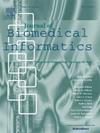A Language-Guided Progressive Fusion Network with semantic density alignment for Medical Visual Question Answering
IF 4
2区 医学
Q2 COMPUTER SCIENCE, INTERDISCIPLINARY APPLICATIONS
引用次数: 0
Abstract
Medical Visual Question Answering (Med-VQA) is a critical multimodal task with the potential to address the scarcity and imbalance of medical resources. However, most existing studies overlook the limitations of the inconsistency in information density between medical images and text, as well as the long-tail distribution in datasets, which continue to make Med-VQA an open challenge. To overcome these issues, this study proposes a Language-Guided Progressive Fusion Network (LGPFN) with three key modules: Question-Guided Progressive Multimodal Fusion (QPMF), Language-Gate Mechanism (LGM), and Triple Semantic Feature Alignment (TriSFA). QPMF progressively guides the fusion of visual and textual features using both global and local question representations. LGM, a linguistic rule-based module, distinguishes between Closed-Ended (CE) and Open-Ended (OE) samples, directing the fused features to the appropriate classifiers. Finally, TriSFA captures the rich semantic information of OE answers and mine the underlying associations among fused features, predicted answers, and ground truths, aligning them in a ternary semantic feature space. The proposed LGPFN framework outperforms existing state-of-the-art models, achieving the best overall accuracies of 80.39%, 84.07%, 75.74%, and 70.60% on the VQA-RAD, SLAKE, PathVQA, and VQA-Med 2019 datasets, respectively. These results demonstrate the effectiveness and generalizability of the proposed model, underscoring its potential as a medical Artificial Intelligent (AI) agent that could benefit universal health coverage.

基于语义密度对齐的语言引导渐进式融合网络用于医学视觉问答。
医学视觉问答(Med-VQA)是一项关键的多模式任务,具有解决医疗资源稀缺和不平衡的潜力。然而,大多数现有研究忽视了医学图像和文本之间信息密度不一致以及数据集中的长尾分布的局限性,这使得Med-VQA仍然是一个开放的挑战。为了克服这些问题,本研究提出了一个语言引导渐进融合网络(LGPFN),该网络包含三个关键模块:问题引导渐进多模态融合(QPMF)、语言门机制(LGM)和三重语义特征对齐(TriSFA)。QPMF使用全局和局部问题表示逐步引导视觉和文本特征的融合。LGM是一个基于语言规则的模块,它区分封闭式(CE)和开放式(OE)样本,将融合的特征引导到适当的分类器。最后,TriSFA捕获OE答案的丰富语义信息,并挖掘融合特征、预测答案和基本事实之间的潜在关联,将它们在三元语义特征空间中对齐。所提出的LGPFN框架优于现有的最先进模型,在VQA-RAD、SLAKE、PathVQA和VQA-Med 2019数据集上分别实现了80.39%、84.07%、75.74%和70.60%的最佳总体准确率。这些结果证明了所提出模型的有效性和可泛化性,强调了其作为医疗人工智能(AI)代理的潜力,可以使全民健康覆盖受益。
本文章由计算机程序翻译,如有差异,请以英文原文为准。
求助全文
约1分钟内获得全文
求助全文
来源期刊

Journal of Biomedical Informatics
医学-计算机:跨学科应用
CiteScore
8.90
自引率
6.70%
发文量
243
审稿时长
32 days
期刊介绍:
The Journal of Biomedical Informatics reflects a commitment to high-quality original research papers, reviews, and commentaries in the area of biomedical informatics methodology. Although we publish articles motivated by applications in the biomedical sciences (for example, clinical medicine, health care, population health, and translational bioinformatics), the journal emphasizes reports of new methodologies and techniques that have general applicability and that form the basis for the evolving science of biomedical informatics. Articles on medical devices; evaluations of implemented systems (including clinical trials of information technologies); or papers that provide insight into a biological process, a specific disease, or treatment options would generally be more suitable for publication in other venues. Papers on applications of signal processing and image analysis are often more suitable for biomedical engineering journals or other informatics journals, although we do publish papers that emphasize the information management and knowledge representation/modeling issues that arise in the storage and use of biological signals and images. System descriptions are welcome if they illustrate and substantiate the underlying methodology that is the principal focus of the report and an effort is made to address the generalizability and/or range of application of that methodology. Note also that, given the international nature of JBI, papers that deal with specific languages other than English, or with country-specific health systems or approaches, are acceptable for JBI only if they offer generalizable lessons that are relevant to the broad JBI readership, regardless of their country, language, culture, or health system.
 求助内容:
求助内容: 应助结果提醒方式:
应助结果提醒方式:


